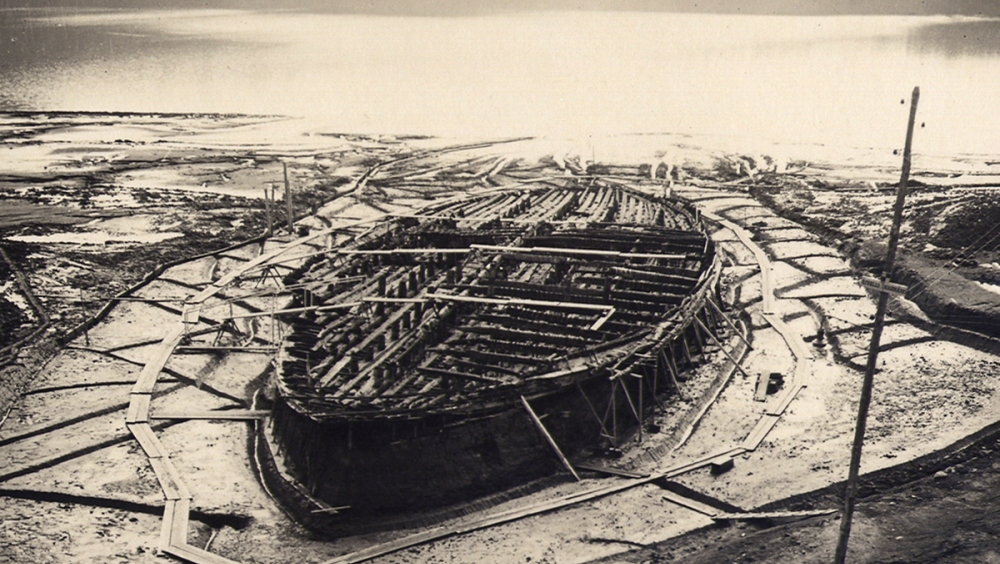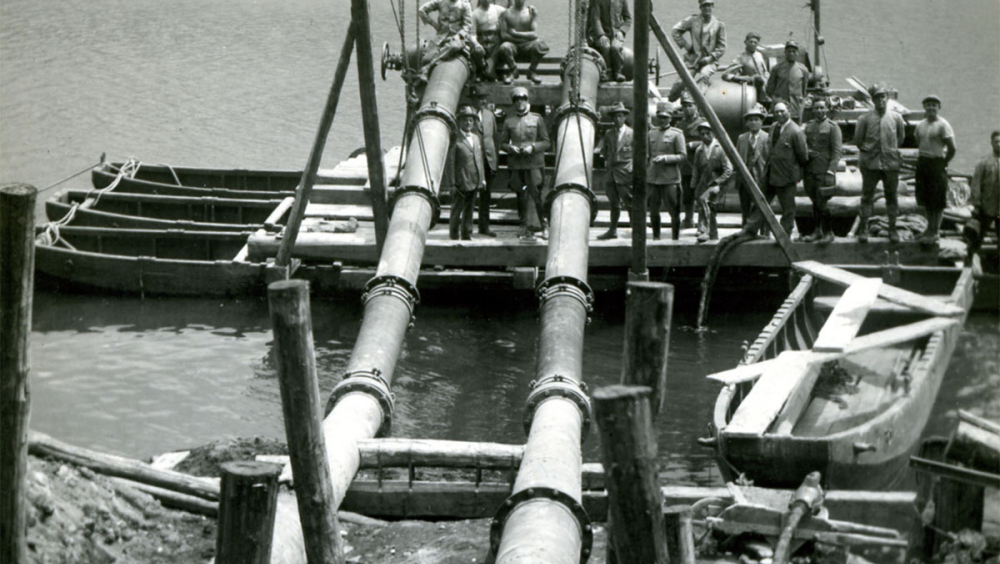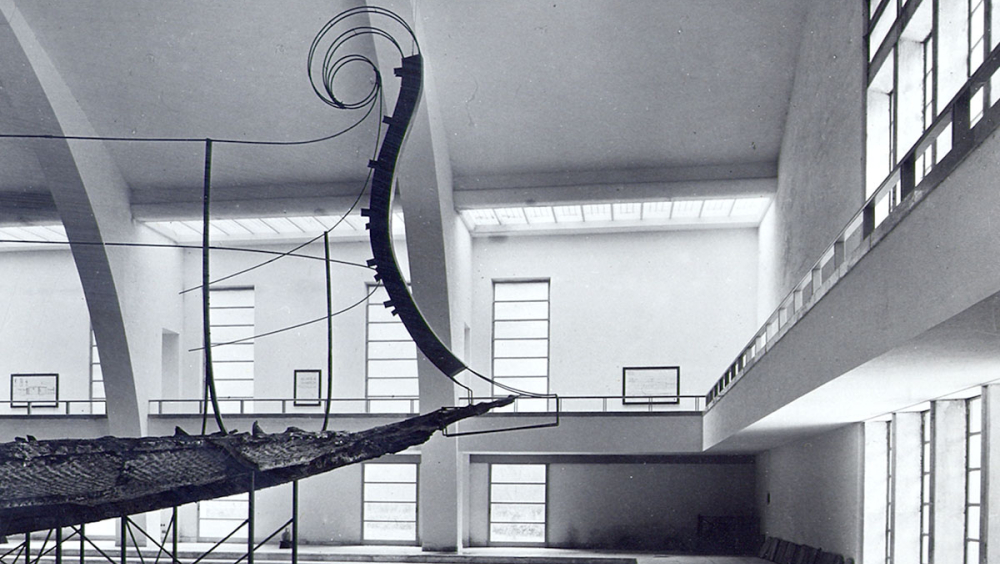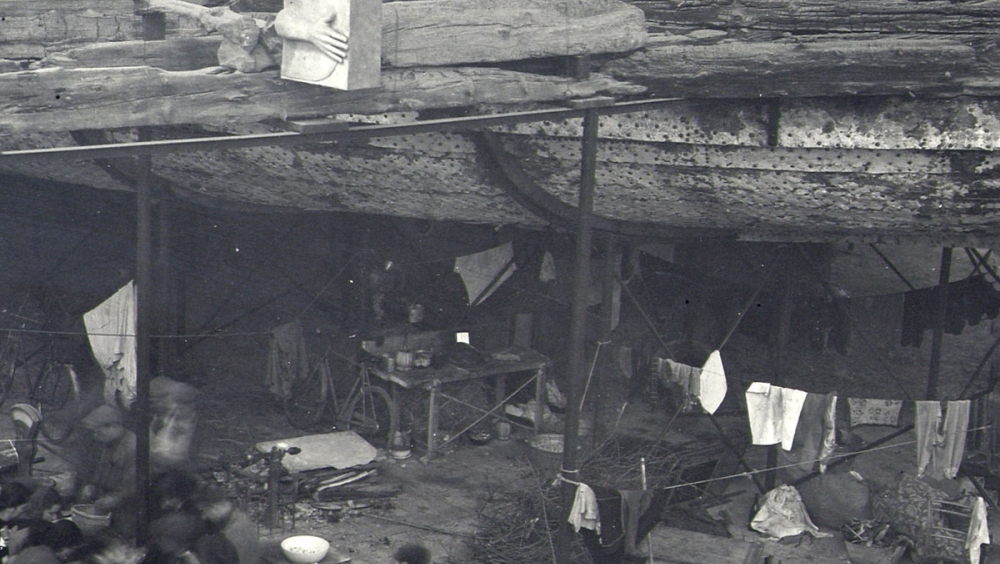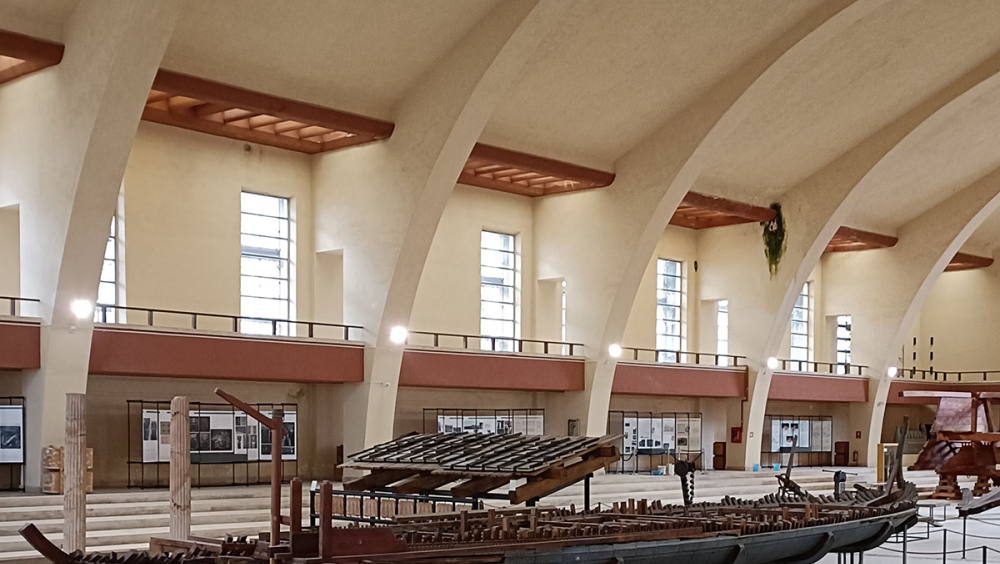Voices from the Lake: the Roman Ships and Nemi Museum
Two extraordinary Roman ships, built by Emperor Caligula, were brought to light in the 1930s after lying hidden for two thousand years beneath the waters of Lake Nemi near Rome. Their rediscovery captured the imagination of Europe, unveiling advanced naval engineering that linked ancient Rome to other Mediterranean cultures, from Greece to Spain. The museum, an elegant example of Italian rationalist architecture, was created to house these monumental ships, celebrating a shared European maritime heritage.
However, the dark days of the Second World War brought unexpected trials: the museum served as a refuge for civilians displaced by the conflict before a mysterious fire destroyed the vessels in 1944. This tragic loss became a symbol of the devastation inflicted on Europe’s cultural heritage, but also a reminder of its resilience.
Today, the story of Lake Nemi resonates as a powerful symbol of European cultural memory, weaving together themes of discovery, loss, and the determination to preserve a common past. The project aims to revive the memory of these ships and explore the ancient maritime connections that united different parts of Europe. Through the voices of local communities, international collaboration, and innovative digital storytelling, the past emerges not as a collection of static relics, but as a living narrative that continues to shape our shared European identity.
Once upon a time, there were two Roman ships at the bottom of a lake. Two huge ships, built by Emperor Caligula as floating palaces on Lake Nemi, water extensions of his imperial villa outside Rome. Sunken in antiquity, the ships remained submerged at the bottom of the lake for two thousand years, feeding the legends passed down by the locals, ignited by the occasional discovery of finds by fishermen.
After long centuries in which the ships remained forgotten on the seabed, out of sight and out of mind, attempts to bring them back to the surface began during the Renaissance, involving the most fervent minds of the time. It was Leon Battista Alberti, the brilliant Renaissance architect and theorist, who studied the first recovery hypothesis, which, however, remained unrealised. Various attempts were then made in the 19th century; but due to the considerable size of the hulls, which were difficult to move, these efforts caused damage to the structures without succeeding.
It was only between the 1920s and 1930s that a new attempt finally brought the ships to light, through an unprecedented, titanic engineering feat: under the leadership of engineer Guido Ucelli, Lake Nemi was in fact partially drained with a system of water pumps. The gradual draining of the lake, initiated by Benito Mussolini himself as a symbol of fascist propaganda, went on for about two years, until the two boats emerged, which in 1932 saw the light again after centuries of darkness. What appeared were two marvels of naval engineering, adorned with mosaics, columns, bronze decorations, heating systems and advanced construction technology, rare even for Roman shipyards.
The discovery toured Europe, fascinating scholars and the curious alike, and the ships were placed in a purpose-built museum on the shores of the lake and opened in 1940. Inspired by naval arsenals, the museum is a splendid example of Italian rationalism designed by architect Vittorio Morpurgo, characterised by clean, essential lines, large windows overlooking the surrounding lake landscape and a symmetrical development designed to enhance the monumental hulls. The geometries of the building were perfectly calibrated to the ships: a tailor-made container designed to enhance the contents. Travellers and scholars from all over the world visited the inner halls admiring the ships from above, through two galleries that allowed them to walk at height around the hulls.
In 1944, however, the young museum played an entirely different role: in the final phase of the Second World War, the building became a refuge for war refugees. For several months, its halls were transformed into an immense house inhabited by hundreds of people who lived together with the majestic Roman ships in a unique interweaving of the distant past and the drama of the present.
But the fate of the ships was far from over. In 1944, also during the Second World War, after the museum had been abandoned by evacuees, a fire destroyed both ships, reducing them to ashes. The causes of the fire remain shrouded in mystery to this day: some speak of an act of sabotage by retreating German troops, others speculate on an accident. The loss of the ships represents not only the end of two extraordinary archaeological testimonies, but also a symbol of the European heritage devastated by the conflict. The black and white photographs, the few surviving fragments and the testimonies handed down through the generations are all that remain of those extraordinary floating architectures, scale models of which can be found in the Museum today.
Despite their tragic loss, the Nemi Ships live on in the local collective memory. Today, however, that memory is at risk: the generation that lived through the salient events of their rediscovery and destruction is disappearing, and with it the direct voices of those days. The podcast project ‘Voices from the lake: the Roman ships and Nemi Museum’ was born out of the urgency to fix those memories before they are lost forever, interweaving archaeology, architecture and oral history.
Through five episodes, the podcast will take listeners on a journey through the history of the ships: from their construction ordered by Caligula to the daring enterprise of recovery, from the mystery of the fire to the rediscovery of a naval heritage - the Roman one - capable of uniting different places in Europe. One episode will be entirely dedicated to architecture, exploring not only the structures of the ships but also the Morpurgo building, considered a pioneering example of a museum designed according to the works it houses.
The local community will be an integral part of the project: the voices of the inhabitants, family memories, handed-down tales and legends linked to the lake will enrich the narrative, bringing the lost ships back to life. Experts in naval history and archaeology from other European countries, with which the museum collaborates scientifically, will also be involved in order to investigate the links between Roman naval techniques and those of other sites in the Mediterranean, such as Marseilles, Spain and Greece; and museums similarly dedicated to Roman ships, such as the Museum für Antike Schifffahrt in Mainz.
Thus, the Nemi Ships will become a symbol of European connection, transforming a memory marked by war into a tale of cultural sharing. A shift from remembering the destruction to celebrating common heritage and good practices of preservation and valorisation. The podcast will be accessible free of charge on digital platforms, with multilingual transcripts to encourage wide and inclusive dissemination.
The voice of the lake, its ships and the museum that remembers them will be able to narrate again, bringing to light a history that is not only of Nemi, but of the whole of Europe.
Lake Nemi harbours a profoundly European history, weaving collective memory, shared culture and exchange networks through the centuries. Roman ships, with their advanced technology and rich decoration, bear witness to the influence of Roman shipyards throughout the Mediterranean, linking Nemi to port cities such as Marseille, Cartagena and Athens. The podcast project explores these connections, involving international experts and comparing Roman naval techniques with those of other European sites.
European memory is also reflected in the tragic events of the Second World War, when the fire of 1944 destroyed the ships. The mysterious circumstances of the fire — between hypotheses of German sabotage and accident — recall the weight of the conflict on European material culture. The collection of oral testimonies and the analysis of historical sources aim to preserve this memory before it fades with the last generations who lived through those events. The podcast thus becomes a tool to transform a memory marked by war into a shared heritage, in which the rediscovery of ships is a symbol of cultural resilience.
Nemi is also a key place of the Grand Tour, a favourite destination of European travellers and intellectuals between the 18th and 19th centuries, fascinated by the myths and ruins of Lazio. The lake's charm inspired James Frazer's The Golden Bough, a work that profoundly influenced European anthropology, and the famous painting of the same name by J.M.W. Turner, capturing its mystical atmosphere. The cult of Diana Nemorensis and the rituals linked to the lake, evoked by Frazer, reflect a continuity of symbols and narratives across the continent.
Through these historical and cultural paths, the Nemi Ships emerge as a bridge between past and future, between the shores of the lake and the cities of Europe, revealing a common history that deserves to be told and shared.
